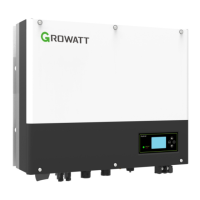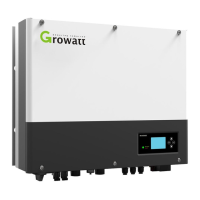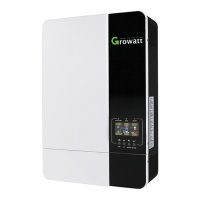Inverter distribution capable of charging and discharging at the same time.
Method of asserting demand response modes
RJ45 socket asserted by
shorting pins
operate the disconnection device
Do not generate at more than 50% of rated power
Do not generate at more than 75% of rated power
and sink reactive power if capable
Increase power generation (subject to constraints
from other active DRMs)
5.4.10 Connection of temperature probe for lead-acid battery
When customer using lead-acid battery, the temperature probe of the lead-acid battery
is used to detect the ambient temperature of the lead-acid battery, the battery
temperature cable of the SPH side connection steps are as follows:
1.Unscrew the swivel nut from the cable gland.
2.Thread the swivel nut over the “NTC” cable.
3.Press the cable support sleeve out of the cable gland.
4.Remove the filler plug from the cable support sleeve.
5.Route the “NTC” cable through a min opening in the cable support sleeve.
6.Thread the “NTC” cable through the cable gland.
7.Insert the RJ45 plug of the network cable into the “NTC” pin connector on the inverter
until it snaps into place.
8.If no other cables need to be installed, lock the waterproof cover to the inverter with
screws.
9.Screw the swivel nut onto the waterproof cover.
Note:
1.If you are using a lithium battery, you do not need to install this temperature probe, the
probe of the temperature cable should be attached to the surrounding environment of
the lead-acid battery, and the length of this cable is 1.5m, so pay attention to the
distance of battery and SPH.
2.If the cable such as “NTC” (lead-acid battery temperature sensor) cable is not used,
please do not remove the filler plug from the cable support sleeve.
Chart 5.34
Chart 5.33
33
34
NT C B a t t ery
NTC
Note:
If the cable such as “NTC” (lead-acid battery temperature sensor) cable is not used,
please do not remove the filler plug from the cable support sleeve.

